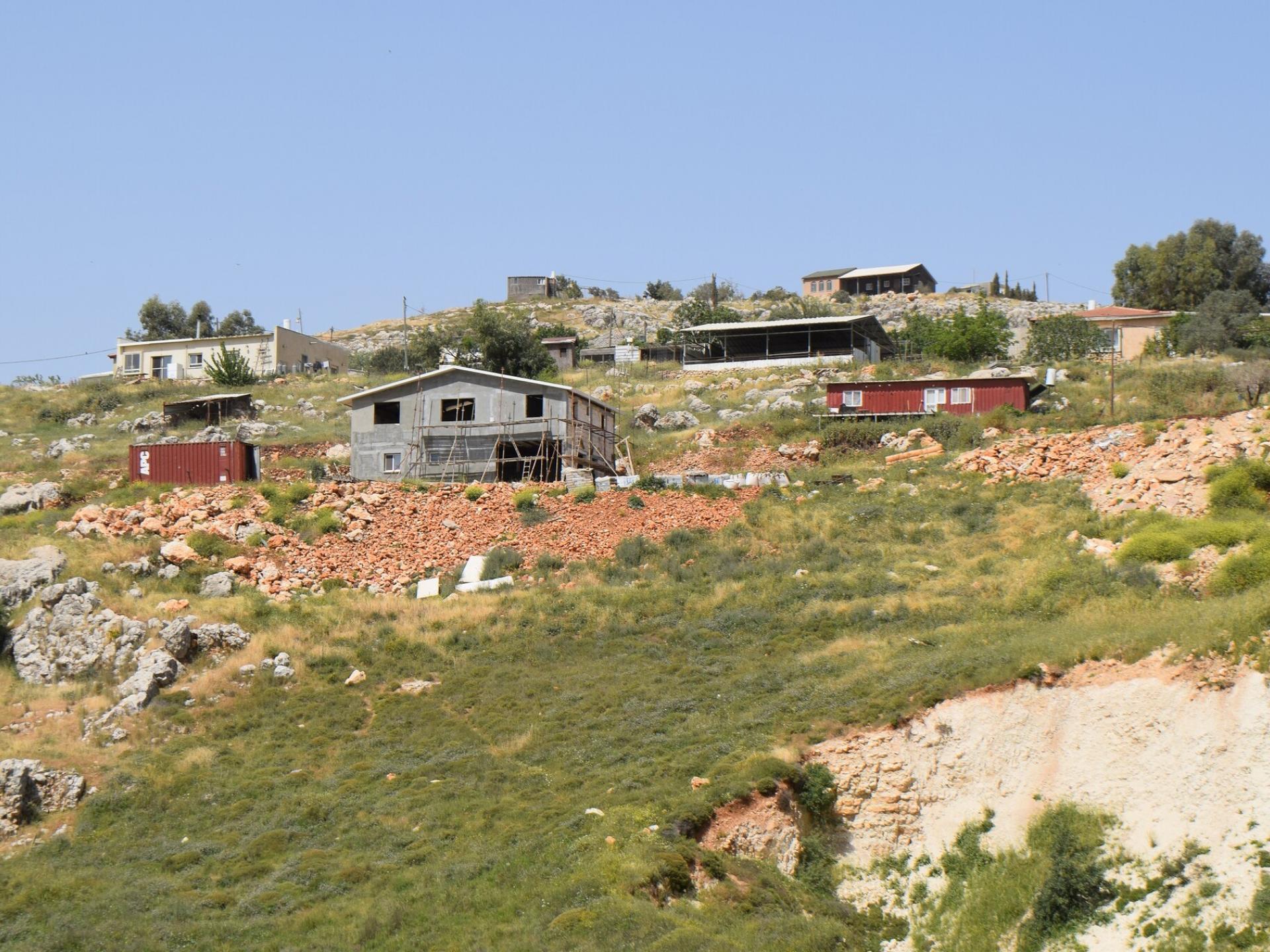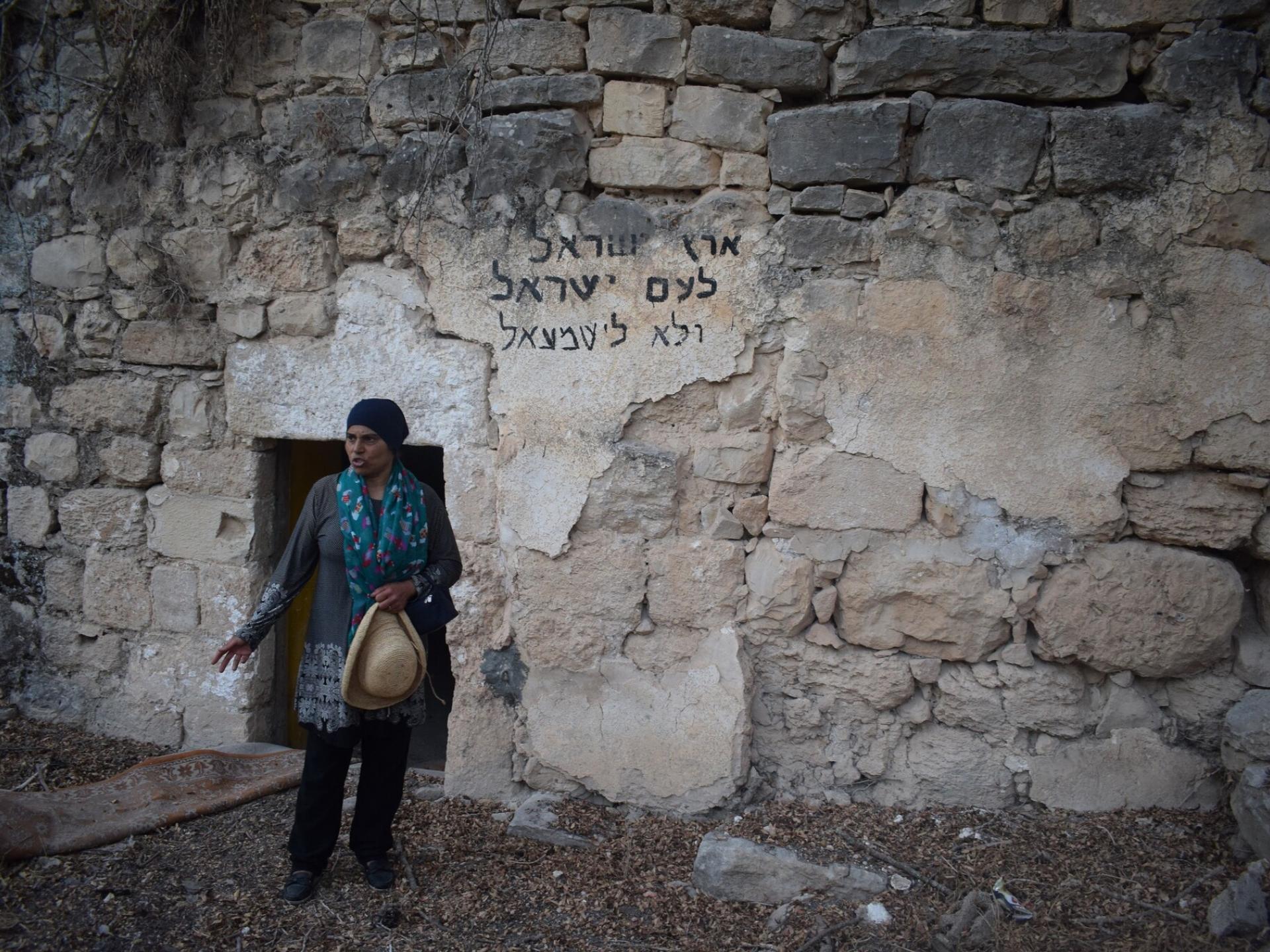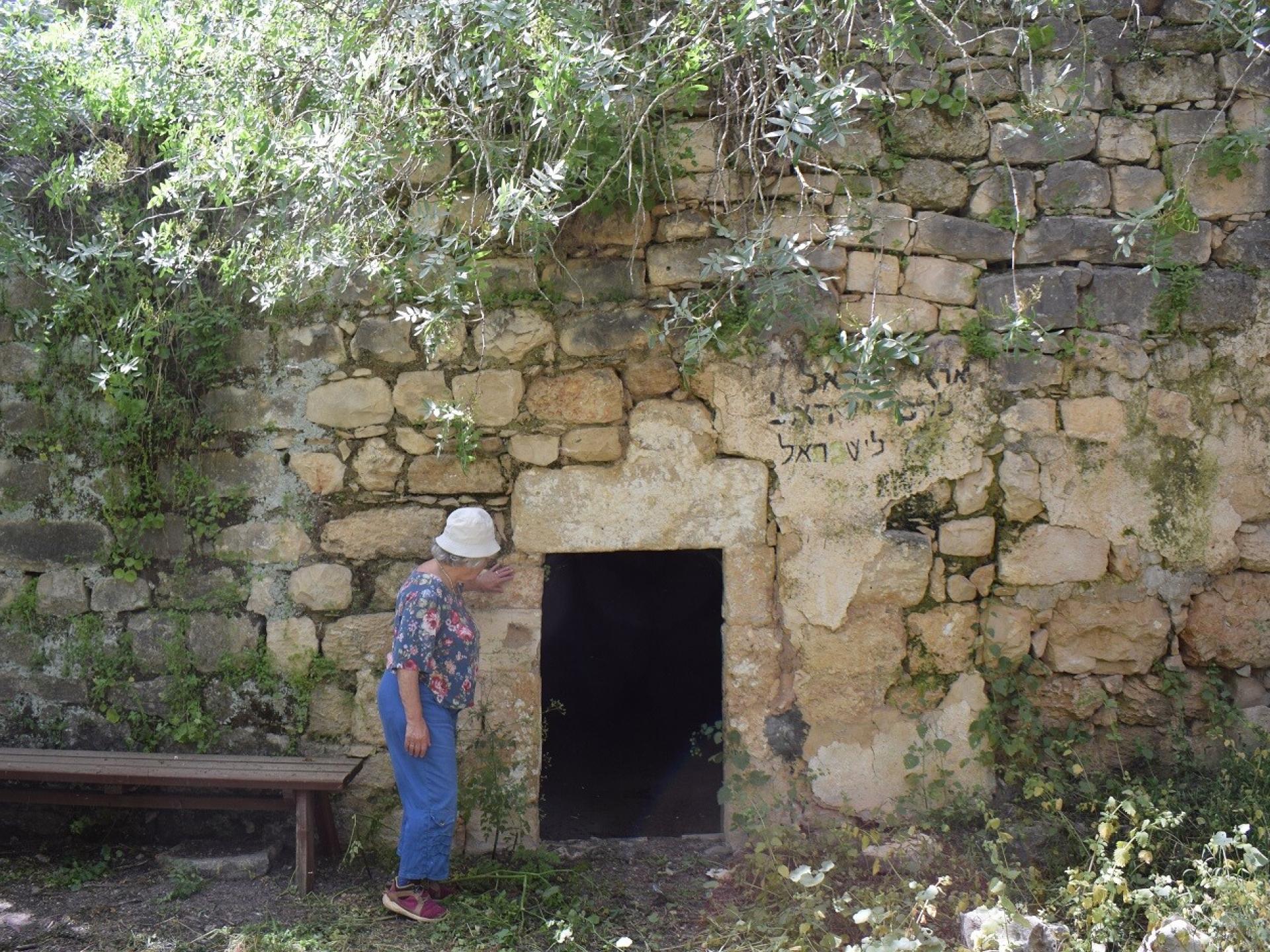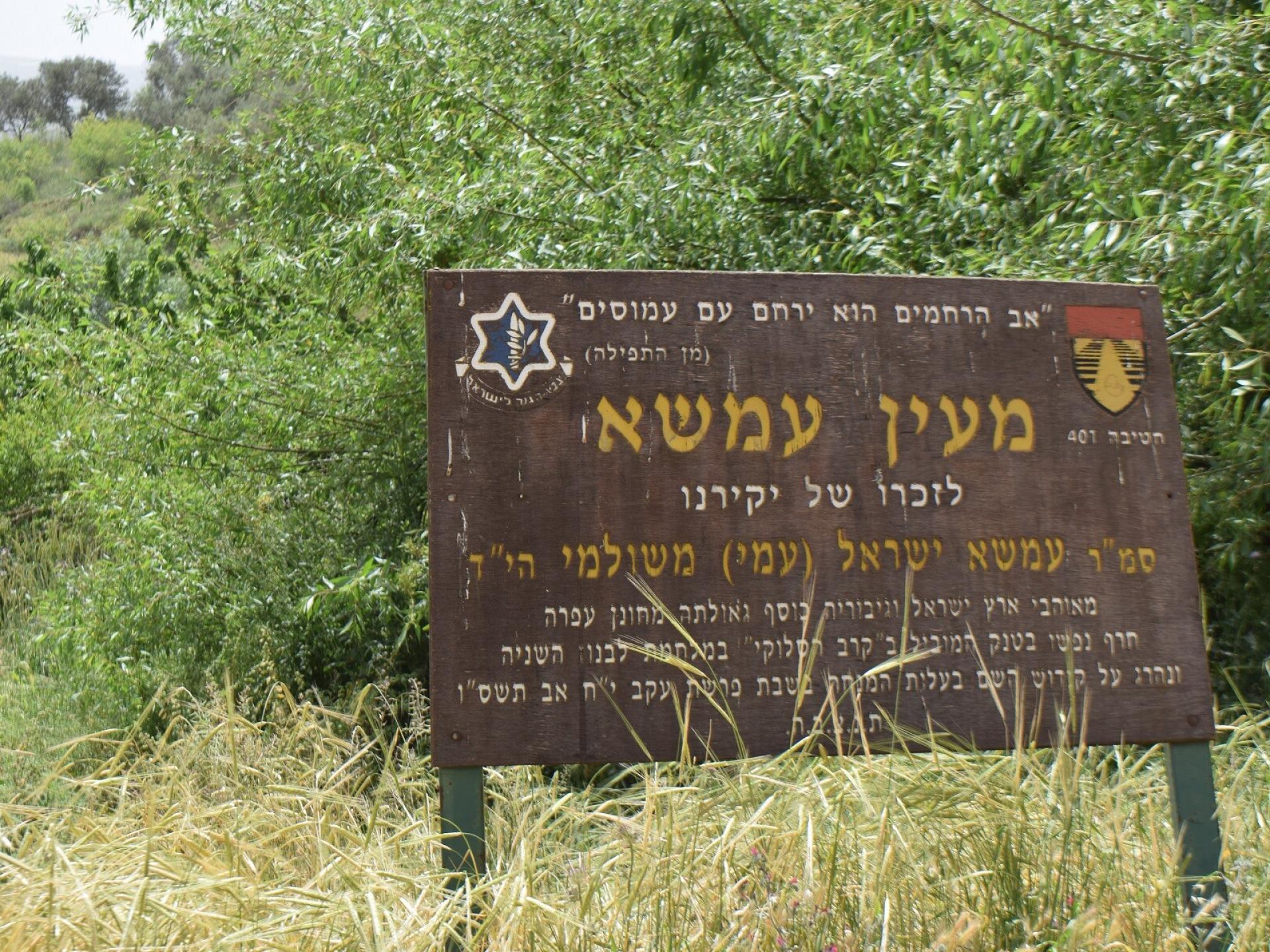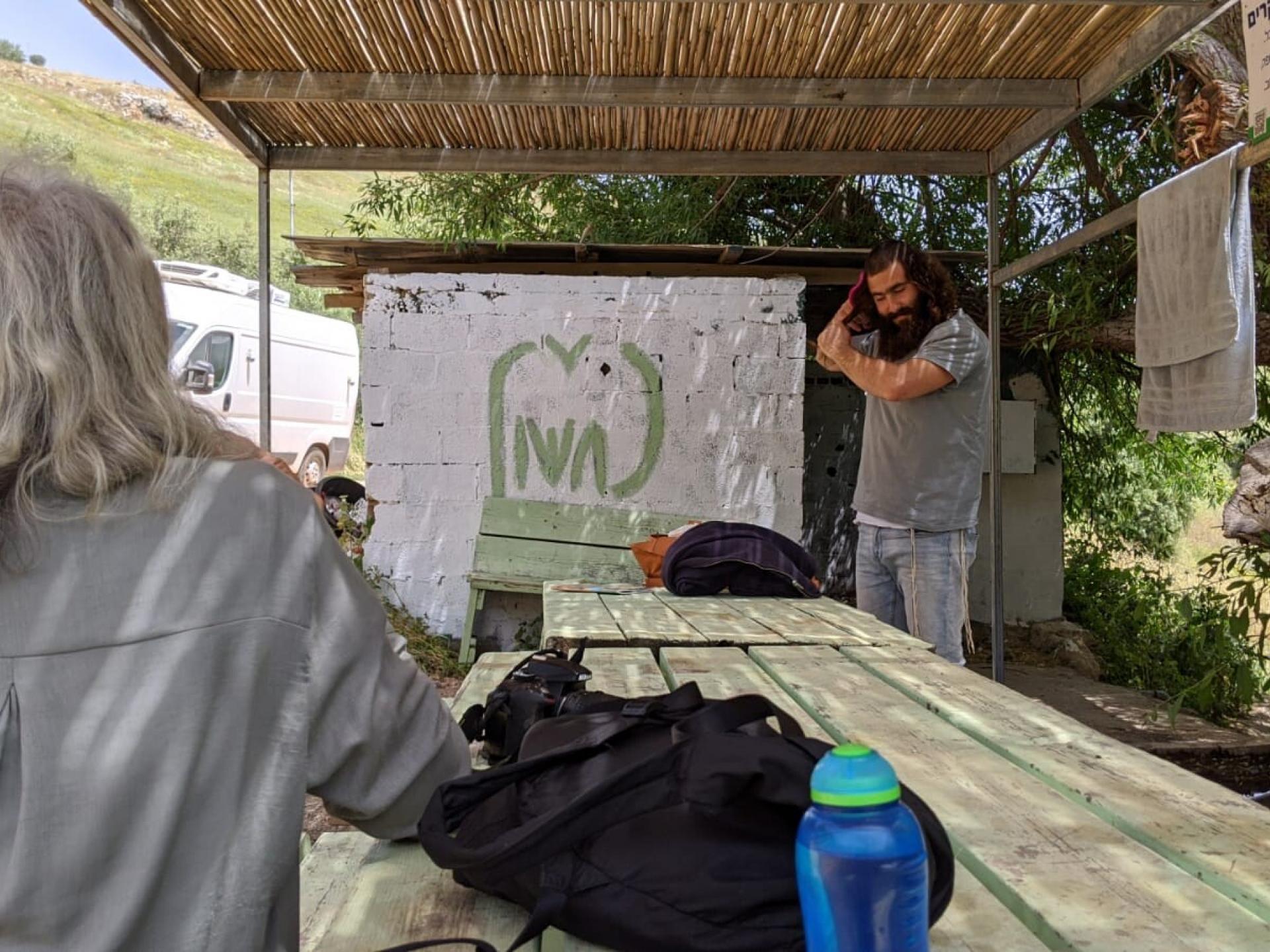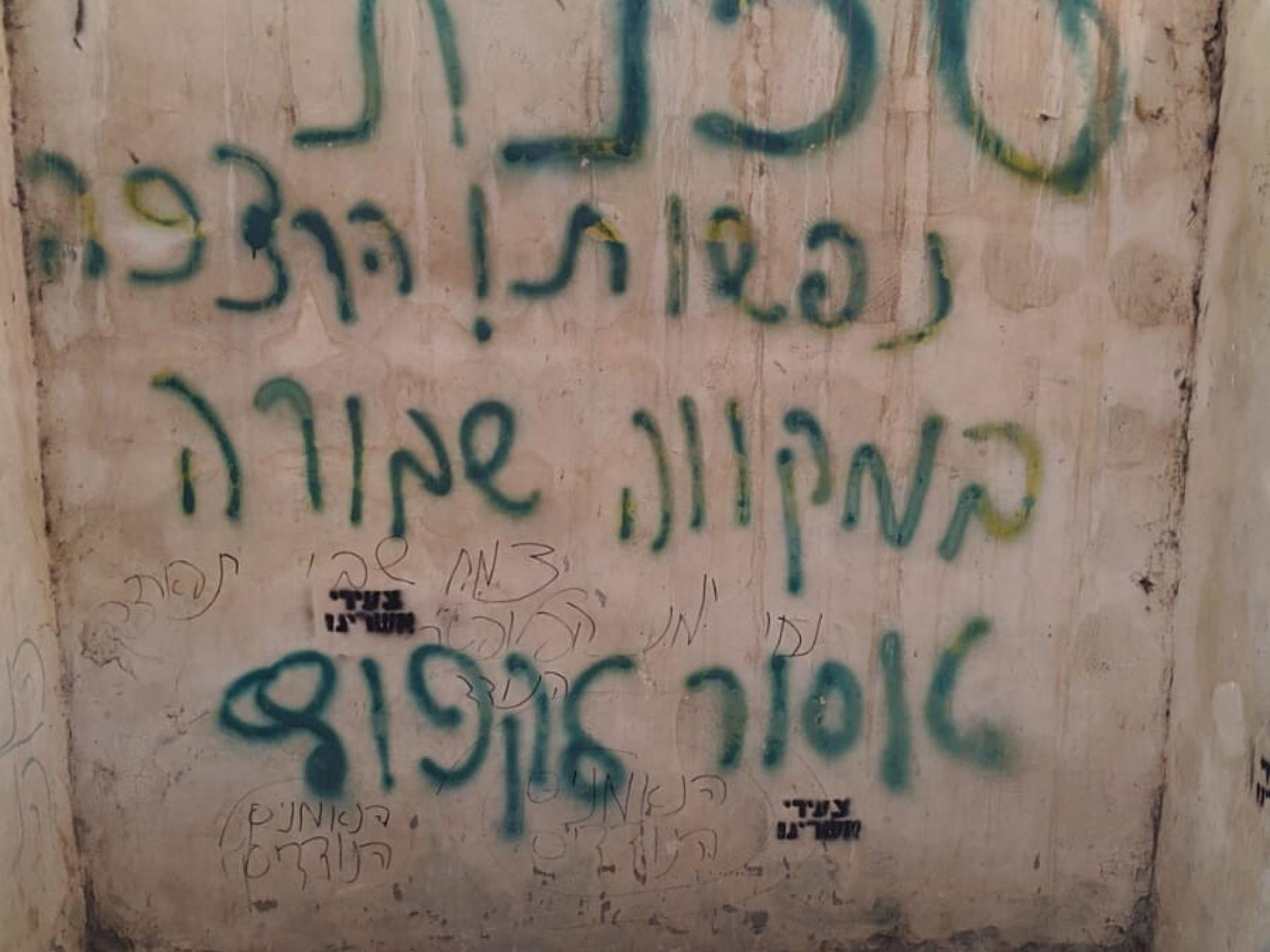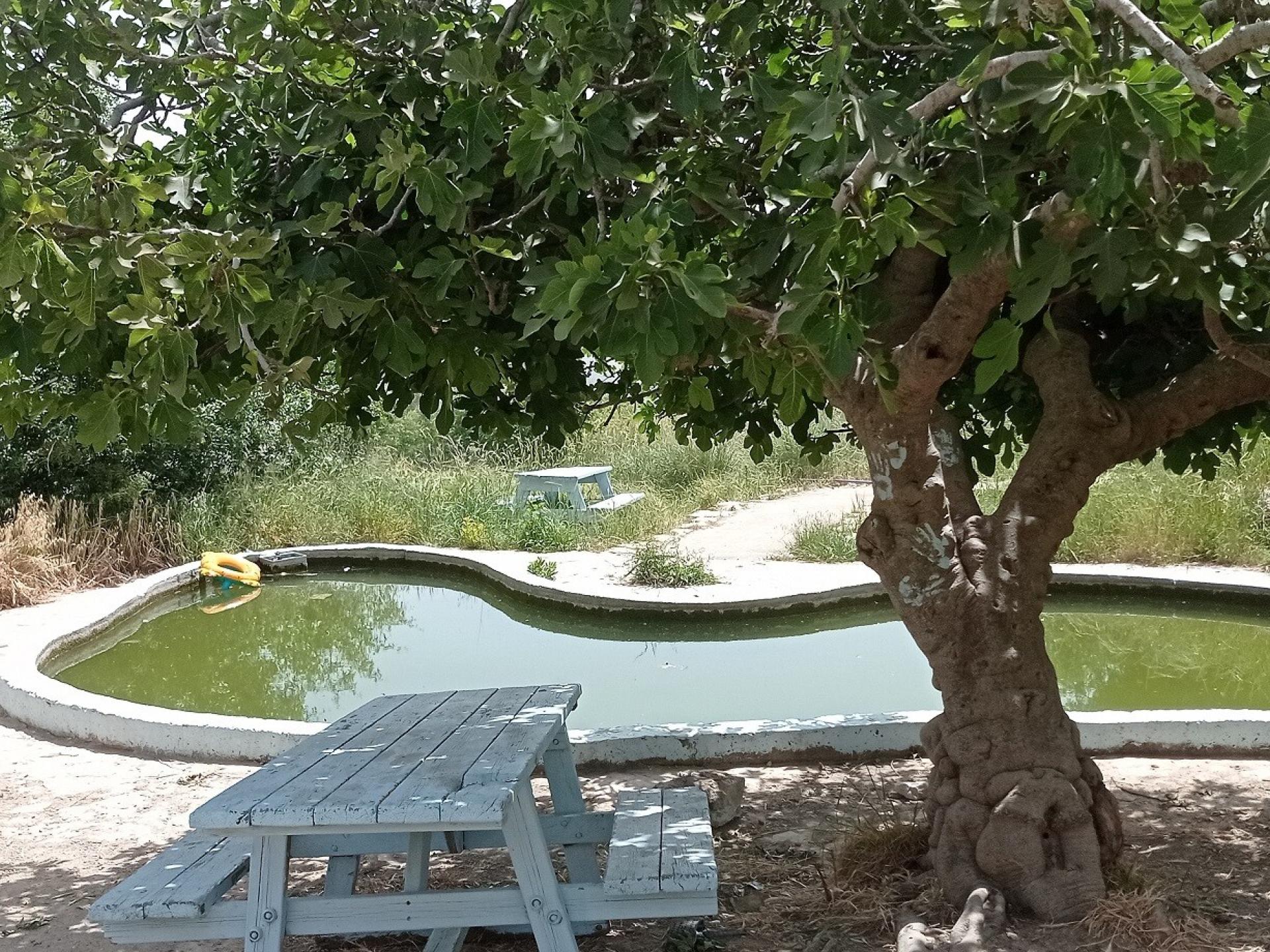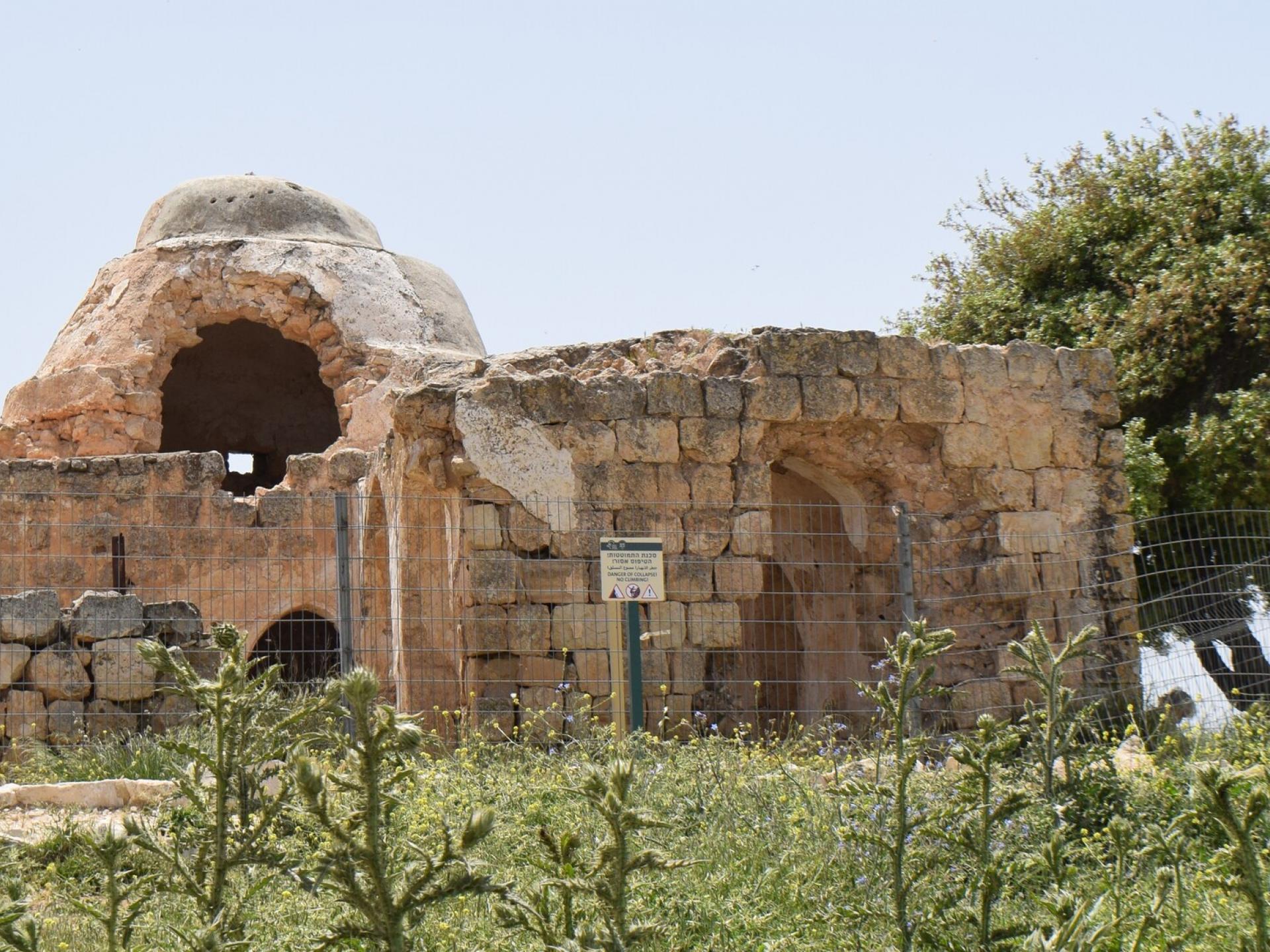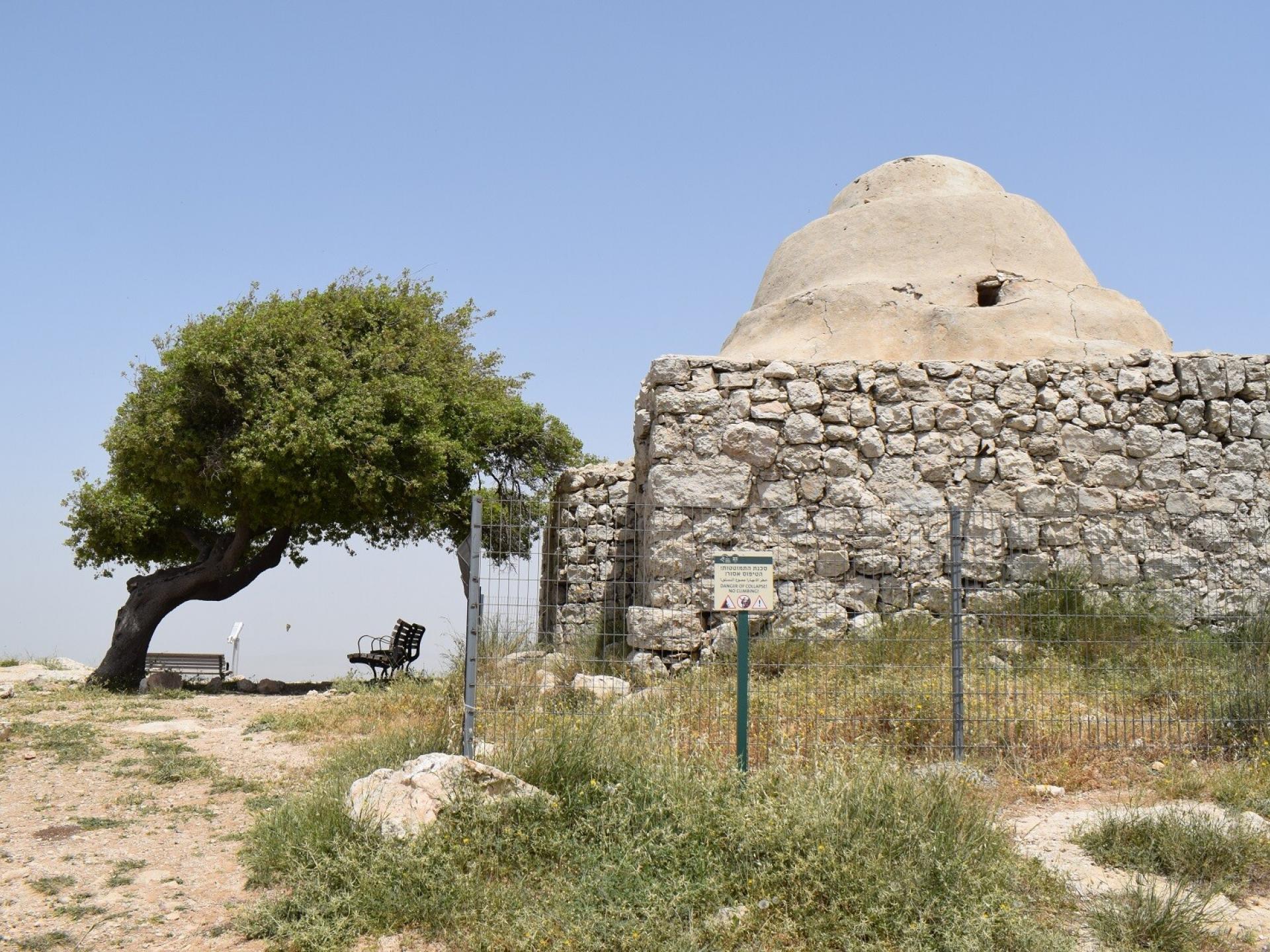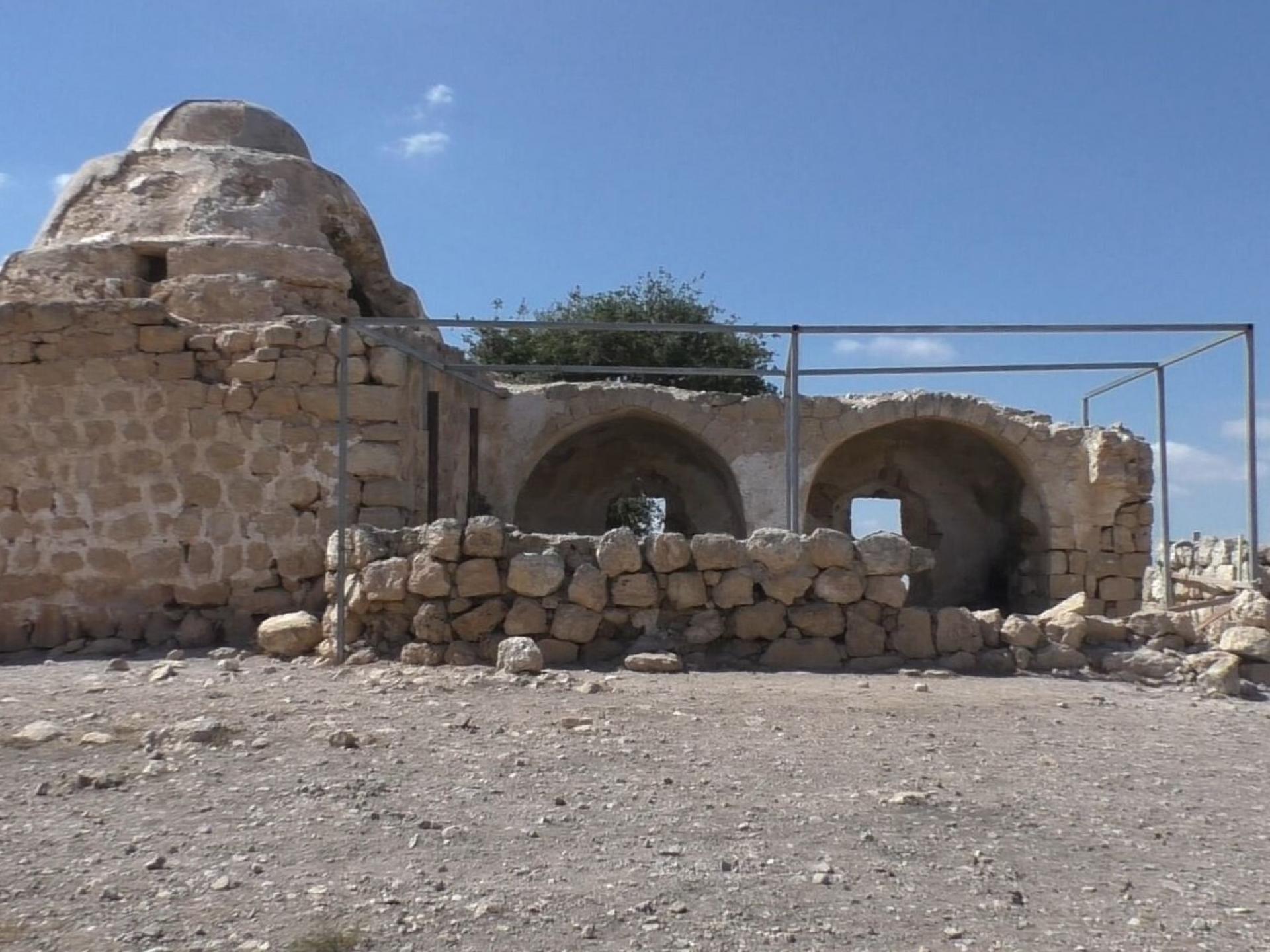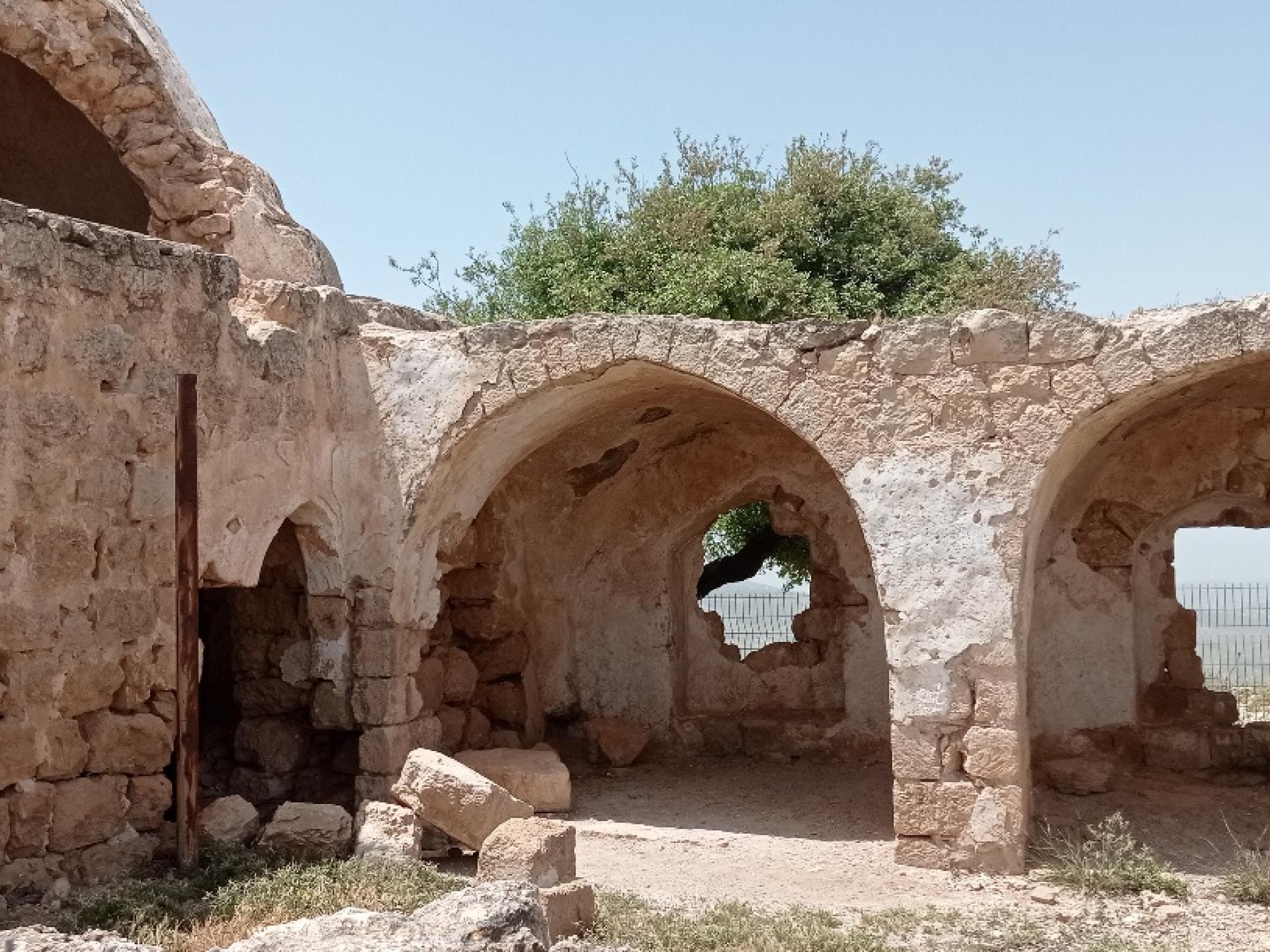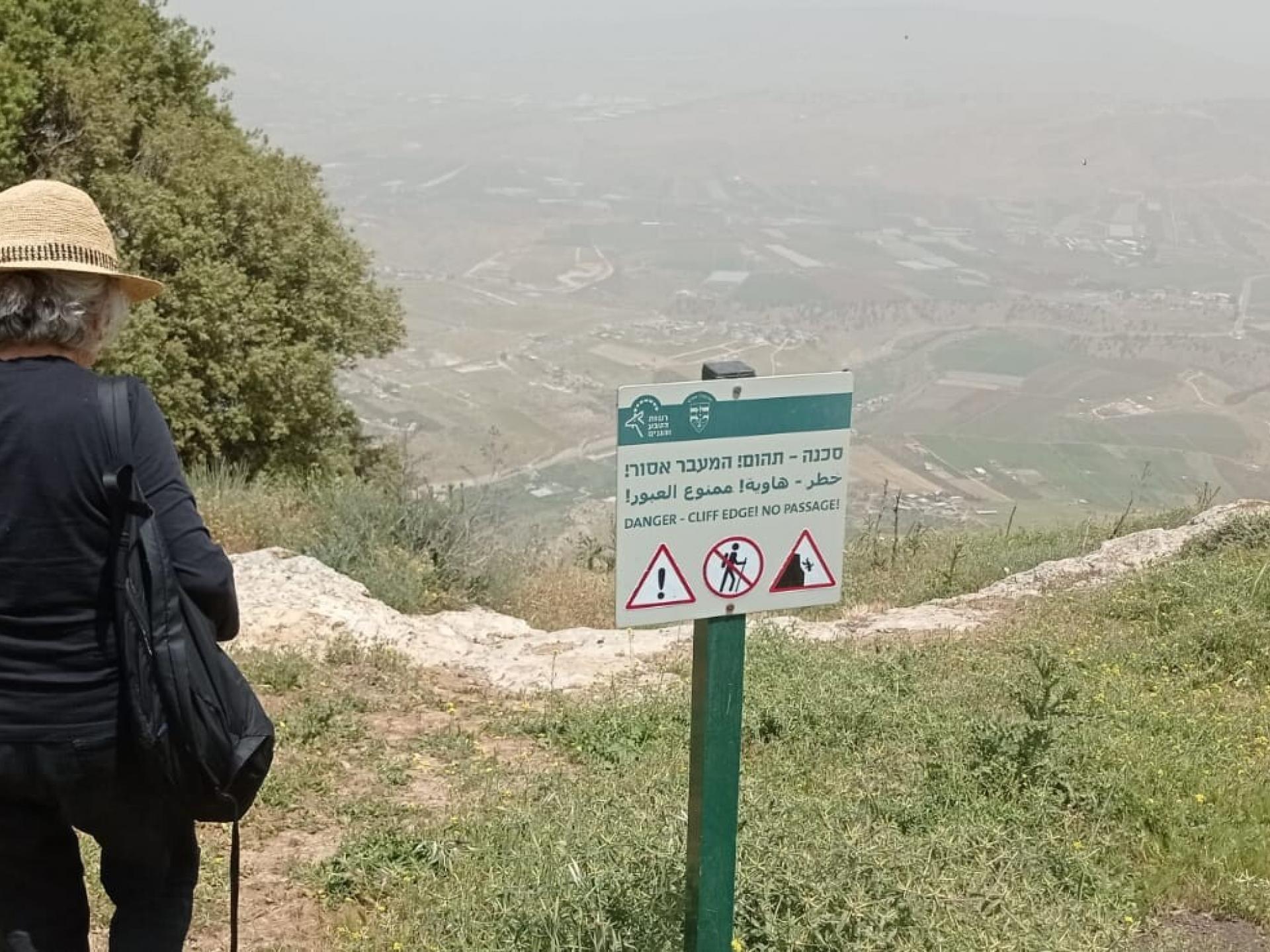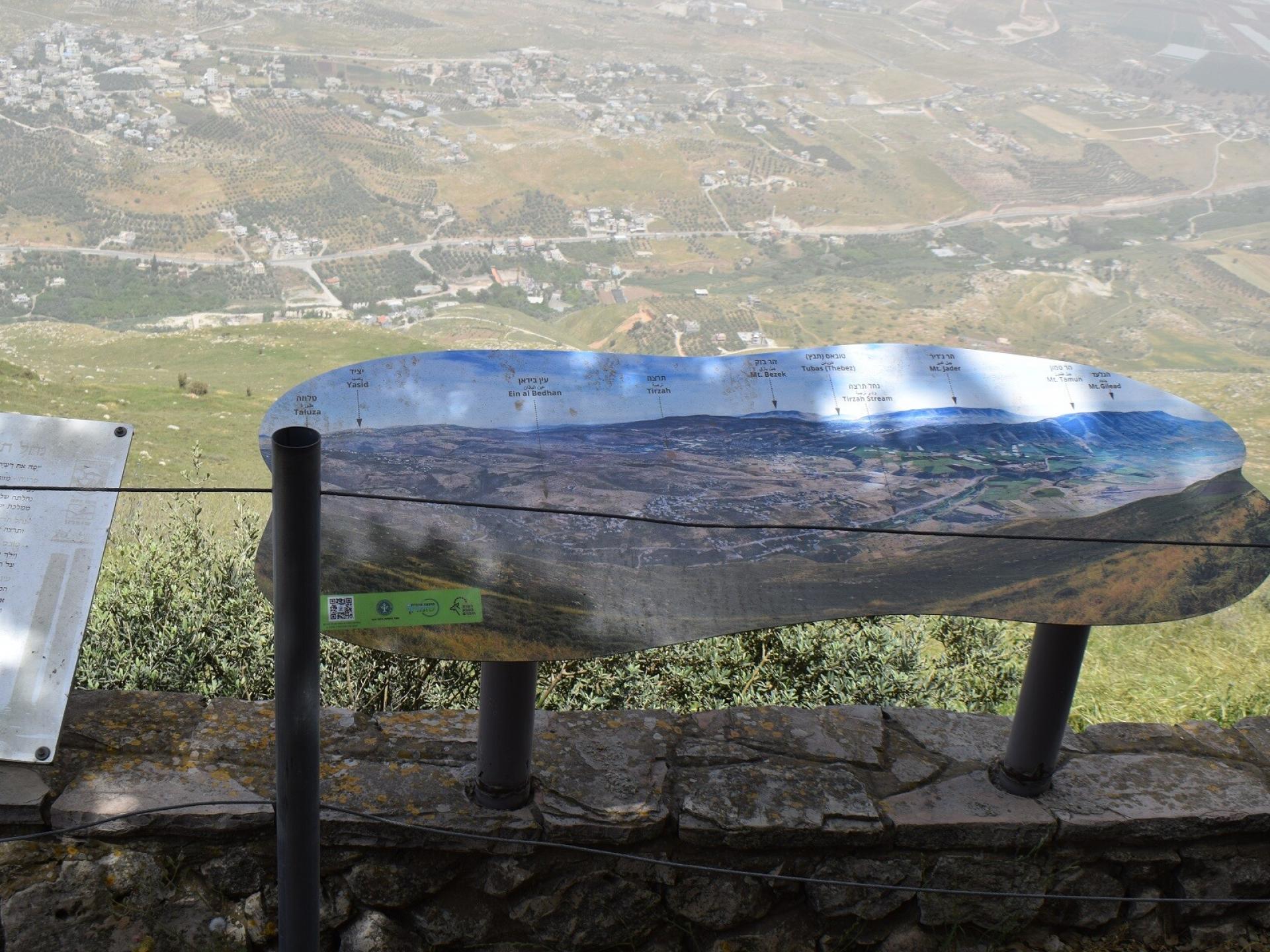Maqams Abu Ismail and Sheikh Bilal are in serious condition
More than three years have passed since we visited the maqams in the Nablus area. Our findings are grim. The situation of the Maqams Abu Ismail and Sheikh Bilal is very serious. Immediate renovation is required before they become ruins.
Maqam Abu Ismail
To the right of the road towards maqam Abu Ismail and the grove of Atlantic Terebinth lie cultivated olive groves. These plots belong to Burin residents, who do not come here even though there is no barrier on the road. The houses of the Givat Ronen outpost on the hill are close to the road leading to the maqam. Since our last visit about 3 years ago many homes have been added. The driver parked the minibus on the side of the road, in front of the houses of outposts. We continued walking slowly along the path for about 12 minutes.
As we approached the maqam we noticed that the Nature Reserves Authority sign had disappeared. This is a sign that was placed in the past in front of the stone staircase leading to the maqam with the caption: Danger - Passage is forbidden. Its disappearance did not indicate an improved condition. On the contrary, the place is deserted and covered with vegetation. even growing in the walls between the stones - a condition that accelerates the deterioration of the structure. Within the maqam, we did not notice any change. The abusive and blasphemous graffiti at the entrance to the building and inside has only faded slightly. The maqam is in a state of disintegration, and no responsible party seems to refer to the fact that this is a sacred site for the local population, who, terrorized by the settlers, do not dare come and maintain the place as was customary in the past.
The benches placed for the well-being of hikers, thinking that it is a nature site - a reserve of Atlantic Terebinth trees, pop up through the grass. The paths around these trees and the maqam are covered with thorns and weeds as is the path leading to the villa which in its days of glory was the residence of a family from Burin. The family moved to Jordan with the establishment of the Har Bracha settlement and the Givat Ronen outpost. The abusive graffiti is still on the walls. A huge hole has opened in the ceiling, as in the opposite wall. The whole villa is drowning under lush growth, which accelerates the deterioration of the structure.
Down the hill is the Ein Mah'ne spring named by the settlers Ein Amsa after Amsa Meshulami. His brother, the grounded pilot Yedidya Meshulami, who lives in Itamar, boasts of the destruction of maqam Sheikh Muhammad on one of the highest peaks in the Itamar ridge. A structure known as Judge Gideon's tomb was erected on the hill.
The water from the Ein Mah'ne spring flows through a pipe to a walled pit and from there to a smaller, deeper pool hidden in a small structure called a mikveh. The water is good for drinking. We filled our water bottles and noticed that settlers also came with containers to fill with water. Next to the water pits is a shed and a shaded seating area. We met a settler from Givat Ronen. In a conversation with him, he noted that there are about 30 houses in the outpost. He asked if we were Jews and soon decided we loved Arabs. He noted that the residents of the settlement do not maintain contact with the Palestinians as they ״burn the fields under their houses and kill children. All Palestinians are terrorists.״ Later more settlers arrived. Men. women and children arrive on their way to the wading pools under the water source. Fig, almond, pomegranate and mulberry trees grow around the pools.
Maqam Sheik Bilal.
Entrance to the maqam runs through the settlement of Elon Moreh. The settlement checkpoint opens automatically as long as the vehicle has an Israeli license plate. The National Parks and Nature Reserve signpost on the settlement roads points the way to Mount Kabir. A convenient road reaches up to the maqam and expands into a parking lot. From there a beautiful view of the ancient structure and an oak tree whose dense foliage leans towards it. A painful surprise awaited us. The whole building is fenced. The benches surrounding the tree were removed. On both sides of the compound signs announce danger of collapse and forbidden entry. But as is the custom of Israelis, there is a breach in the fence and it is possible to enter. In the past, there were supports for the structure but they were removed. An iron mesh that closed on one of the rooms was removed. An extensive renovation is needed at this 300-year-old site which was a meeting and prayer place for many villages in the area and throughout Palestine. But it seems that the authorities intend to allow a natural process of deterioration and their only concern is that there will be no accident, God forbid and that no one will be harmed by the sudden fall of some huge stone from one of the walls or ceiling. Of course, there is no mention on the sign of the name of the site and in honor of whom it was built.
A grass-covered path leads to the huge oak tree near the edge of the cliff overlooking the Jordan Valley. A new sign warning of falling over the cliff has been placed in front of the path that descends to it. The telescopes for observing the landscape remain.
It seems there is a definite intent to let the passage of time ravage the buildings that are important to the Palestinians, buildings that, when in their possession, were nurtured and renovated from time to time while using them as a cultural and religious center. With no one responsible for this, they become ruins.
We left the place feeling strongly that these historic sites must be brought back to awareness and work for their renovation must proceed as soon as possible.

